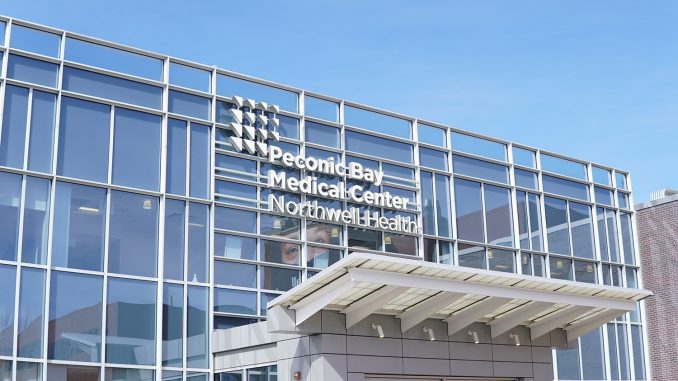
Two to three months ago, Celeste Tracy of Aquebogue began hearing rumors that the skilled nursing facility at Riverhead’s Peconic Bay Medical Center was going to close.
Her father has been a resident of the facility since September 2021.
Ms. Tracy’s worst fears were confirmed Nov. 8, when the hospital held a meeting for patients and family members to announce that the skilled nursing facility, which currently has 12 full-time residents in addition to nonresident patients, would close early next year.
“It just left everyone worse off,” Ms. Tracy said. “And as of today, since that meeting, we are all scrambling.”
She reflects the feelings of 179 people who have since signed a change.org petition asking that the hospital keep the facility open.
“In my opinion, [their decision] compromises their oath to provide care for all,” Ms. Tracy said.
The 60-bed skilled nursing facility has been open since 1985 and will close on Jan. 6, according to a letter hospital administration sent to patients and their families on Nov. 10.
PBMC executive director Amy Loeb said the decision wasn’t made lightly.
“Obviously, this has been a difficult decision for us,” she said. “And there are many reasons behind it. The business of skilled nursing facility has changed dramatically over the last couple of years. We have skilled nursing facilities that are not full and then on top of that, you have changing reimbursements [from Medicare], driving patients to home rather than the facilities.”
Another factor that played into the decision was the hospital’s expansion in recent years, which Ms. Loeb said had created a need to grow their capacity in other areas of health care.
“[The hospital has] grown into a trauma center. We can now take care of patients having heart attacks and perform life-saving procedures. We have growth in cancer care and, just in general, [in] the acute care the hospital has. The the community has really responded, and we continue to get busier and busier,” Ms. Loeb said. “We need to grow bed capacity so that we can continue to meet the needs of the community and grow more services and programs that nobody else can provide.”
She added that beds are available at other facilities in the community “who can absolutely provide the care” PBMC’s patients need. The administration is working to help current SNF patients relocate and find services elsewhere.
“We are working on an individual basis with those patients and their family or caregiver or next of kin or whoever is their partner in decision making, to find them an appropriate place to go,” Ms. Loeb said. “We fully recognize that this is a very important transition that we want to minimize the stress and we will be following those patients.”
Ms. Loeb added that the hospital has entered a “value-based quality arrangement” with Acadia Center for Nursing and Rehabilitation, located about a mile from PBMC, to help the facility’s patients with the transition.
In a value-based quality arrangement, an insurer may reimburse health care providers with incentive payments for the quality of care they provide to their patients.
“Our nursing home administrator is spending significant time in Acadia in partnership to make sure that the standards that Peconic Bay’s skilled nursing facility is known for, [that] our residents can expect the same there,” Ms. Loeb said. “It is another five-star facility and so those patients who choose to go there will have long-term follow up from our team.”
Ms. Tracy said she is currently waiting for confirmation from a different facility to see if her father will be accepted as a resident there.
Many staff members from the skilled nursing facility have already been transitioned into other positions at PBMC, Ms. Loeb said.
“We have been able to transition a lot of those employees over to the hospital and that’s been a huge help for the hospital and a nice transition for those who wanted to try something new,” she said.
Ms. Loeb said that the hospital is in active discussion to determine how the skilled nursing facility’s 20,000 square feet of space will be used.
“There is work that needs to be done where we submit and work with the state on what that becomes,” she said. “It’s a little premature to talk in detail about what that is, but certainly the idea here is to grow acute care capacity and our growth in programs will continue to be in the areas of cardiology, women’s health, cancer care, etc.”

